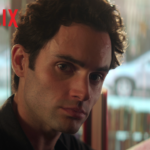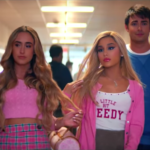Whether you agree or not, these specially crafted planners have become an “annual obsession” for Filipinos. Every year, you can expect loyal customers to burn cash just to get their hands on this most coveted limited-edition planner. And to acquire one, coffee lovers need to spend around Php2,000 to collect all 18 stickers.
There’s no denying that the hype for these fancy planners is real and that it is at its peak during the holidays. For natural coffee drinkers and those who regularly get their daily caffeine intake from this coffee shop, the apparent craze would seem just a reward for being a loyal customer.
And while we are so consumed by this eagerness to collect stickers, we don’t really see the negative effects that have been brought about by this massive hype.
Coffee may be enriching our lives, but our coffee cups are slowly killing the Earth.
So, when does collecting planners become a serious problem? Is it when people just join the bandwagon and we know that they’re never going to use it anyway? Or when we have all these planners but never thought about the proper disposal of plastic wastes caused by our coffee consumption?
A good portion of the public can’t function without grabbing a cup of coffee in the morning. Apart from its fresh invigorating aroma, another thing that makes this everyone’s favorite pick-me-up is the caffeine that gets people energized. There may be countless reasons why we can’t live without coffee, but we sure can go on with our lives without our need for plastic cups, especially if we can’t take full responsibility for it.
A few days ago, two Facebook posts showing improper disposal of plastic cups in public places went viral. Rein De Guzman Morales, called out “Rona,” saying: “18 stickers of Starbucks are equivalent to 18 plastic cups na 400yrs bago matunaw para sa planner mo na hindi magagamit at ipopost mo lang sa Facebook. (18 Starbucks stickers are equivalent to 18 plastic cups that will take 400 years before they decompose for a planner that you’ll never be going to use because you’ll just post it on Facebook.)”
While Social Media Influencer, M.A. Buendía HD pointed out in his post that some people can afford a pricey coffee but not basic human decency.
https://www.facebook.com/rhedelyn.morales/posts/1928367803920519
https://www.facebook.com/MABuendiaHD/posts/1829693647312640
According to the Earth Day Network, the world uses 500 billion plastic cups every year and takeout orders account for around 269,000 US tons of plastic waste that have already entered the oceans. While the United States-based non-profit organization, Ocean Conservancy, reported that the Philippines is said to be one of the five countries that contributes to the world’s plastic waste.
The United Nations Environment Programme (UNEP), an intergovernmental organization, even mentioned during the World Environment Day 2018 that: “About half of all of the plastic waste that ends up in the oceans comes from just five countries: China, Indonesia, the Philippines, Thailand, and Vietnam.”
It takes 18 stickers to redeem a planner–and in every card filled with 18 stickers, 18 plastic or coffee cups are added to the billions of plastic waste clogging our oceans, lakes, and rivers, threatening marine biodiversity and wildlife, pilling up on land, and endanger the environment that we always take for granted.
The problem with buying coffee every day in exchange for the “planner of the generation”
Yes, we have nothing against people who spend their hard-earned cash on these planners. But being obsessed with planning our lives in fancy planners is utterly absurd not only it hurts our wallet, but it also harms the environment. With that, some people and even companies have long strived for alternatives to help reduce coffee cup waste.
In Australia, Abigail Forsyth, along with her brother, Jaime, kick-started a behavioral change in Melbourne. Together they launched KeepCup—a creative solution to the world’s garbage problem—that sells reusable, solid plastic coffee cups. Since then, they have sold more than four million cups in 32 countries, preventing billions of coffee cups from being thrown away.
In Portland, Oregon, recycling advocates launched a campaign called “BYOC (Bring Your Own Cup). Instead of using a disposable coffee cup, customers are encouraged to bring their own cup. This is to create a change in behavior where disposable coffee cups are no longer the standard method for drinking coffee.
In the Philippines, efforts have also been made to eliminate, if not, reduce plastic consumption. The good news is that some manufacturers have recently introduced biodegradable or compostable plastic bags that are made from starches, polymers or polylactic acid, and no polyethylene.
However, to completely stop waste pollution, we need two things: cooperation and law enforcement. Because all the efforts will go to waste if we can’t even practice “CLAYGO” wherever we go.
Now that the year is about to end, and calendars are about to change, we’re hopeful for what’s about to come. Perhaps, living a more eco-friendly lifestyle is something that you can add to your New Year’s Resolution. And this is maybe the right time to use your planners to write down all your thoughts about helping the environment.
____
Read more from InqPOP!:
After the PCGA’s coastal clean-up drive, Manila Bay is still covered in trash
Filipino Trash Issues: Here’s why you should practice CLAYGO (Clean As You Go)
Eco-conscious rider in China teaches litterbug an important lesson on throwing trash



